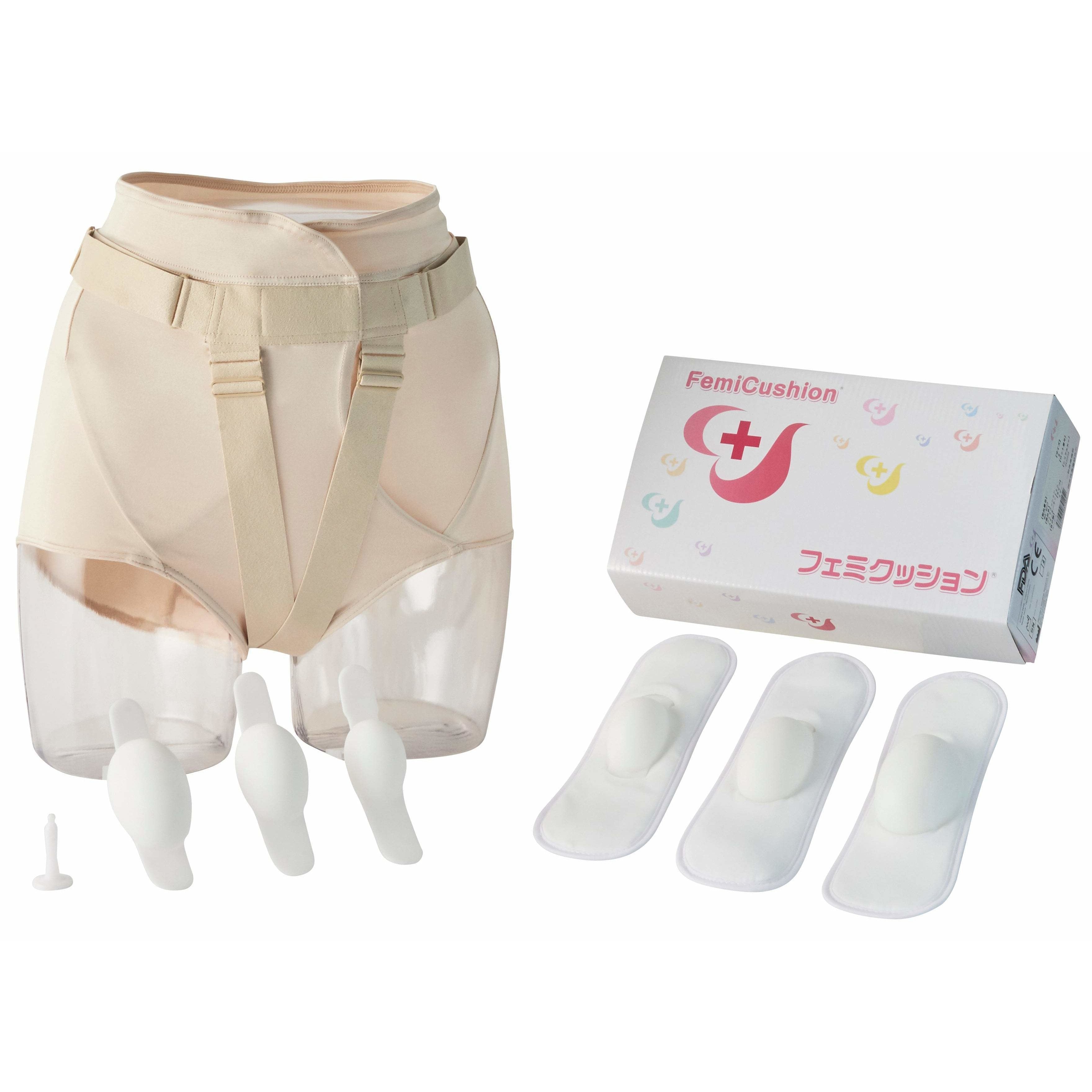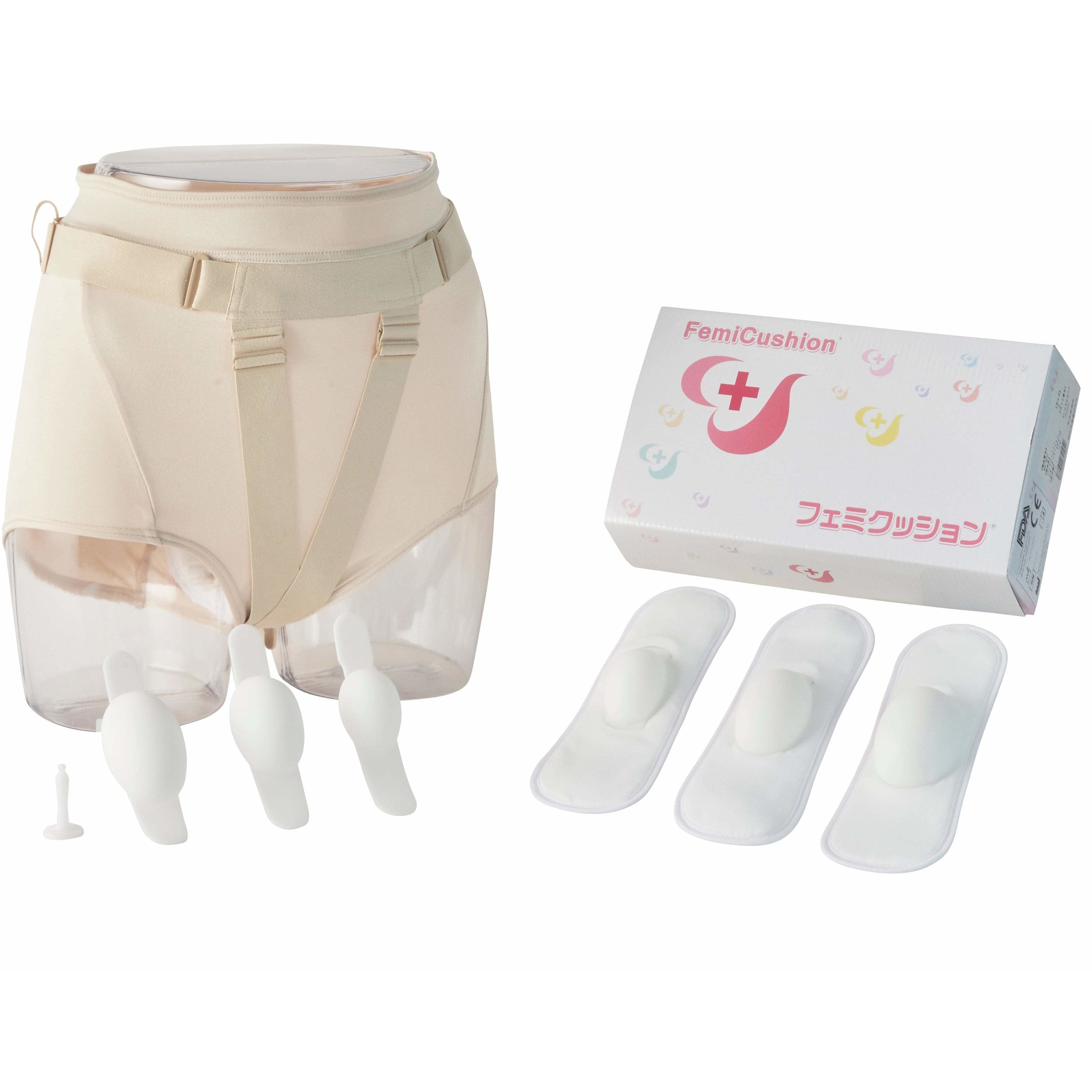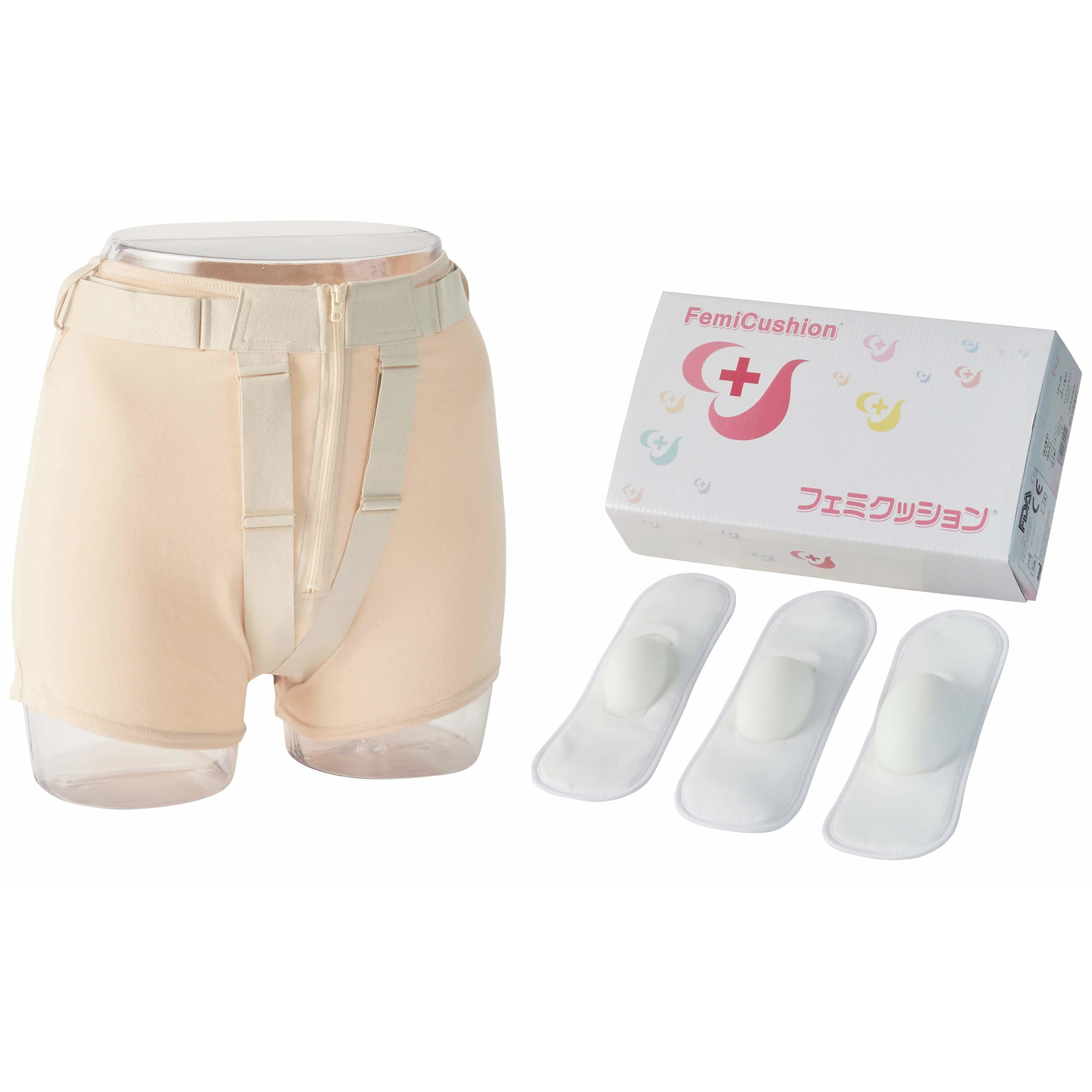Pessary vs. Surgery: The Pros and Cons of Medical Prolapse Treatments
Table of Contents

Deciding on a medical prolapse treatment can be scary, intimidating, and overwhelming. While it may not seem like it, you are not alone in going through this situation. It is important to give each option adequate consideration before making a final decision, so we've created this in-depth comparison of the two most common treatments that doctors suggest: pessaries and surgery. Keep reading to find out the pros and cons of each as well as a new non-invasive treatment option you may have not heard about.
In this article we cover:
- Pessary Pros & Cons
- Surgery Pros & Cons
- Choosing Between a Pessary and Surgery
- Treating Prolapse without a Pessary or Surgery
- A New Option for Treating Prolapse
What Is a Pessary? What Types of Pessaries Are There?
A pessary is a prosthetic device most commonly made out of silicone that is inserted into the body through the vaginal opening to provide structural support to the prolapsed organ(s). Pessary comes in many different shoes and sizes so depending on the type and severity of prolapse that you have, your doctor will recommend you the pessary that is best suited for you. The different types of pessaries include: ring, Gehrung, donut, cube, Gellhorn, inflatable pessary, and shelf pessary. Please note all women must be fitted for a pessary. It is important that the pessary works for your body and sometimes women find that their body is not suitable for pessary use.
Pessary Pros & Cons
Between the two most common prolapse treatments your doctor may suggest, a pessary is often the first option that will be discussed with surgery being suggested only after a variety of pessary shapes and sizes are found to be ineffective.
For those who are successfully fitted with the right type of pessary, the device can offer much needed relief from prolapse. However, several studies found that only 56–73% find success in fitting a pessary with 1 in 4 women not being able to use a pessary either because it won’t fit or because of unwanted side effects or risks.1 A large part of a successful fitting is based on your doctor’s expertise in knowing which pessary shape and size is a good match for your pelvic organ prolapse.
Pessary |
|
Pros |
|
Cons |
|
Risks |
|
Cost |
$50–150 USD* |
Ideal User |
All prolapse stages (I–IV) |
*The estimated cost range is based on the device only and does not consider possible insurance coverage or doctor’s appointment fees.
Want more information? Check out our detailed article on pessary pros and cons.
Prolapse Surgery Pros & Cons
Because prolapse surgery is usually considered a more long-term solution than a pessary, moving forward with this treatment option requires careful consideration. There is no guarantee that your prolapse condition will not return as your pelvic organs continue to change with age and/or if you continue to put stress on your pelvic organs. There are also added risks of putting your body through surgery as well as potential side effects associated with pelvic organ surgery.
Surgery may be your best option if:
- Pessaries or other nonsurgical treatments no longer help with your symptoms
- You have issues with incontinence
- You do not want to or are not able to use a pessary
- Your quality of life worsens
There are two types of surgeries that your doctor may suggest: closing part or all of the vagina (obliterative) and repairing the pelvic floor or organ placement (reconstructive). Your doctor can help you decide whether or not surgery is the best option and which method is best based on your age, future family plans, and current health conditions.2 Also, because pelvic organ prolapse is not a life-threatening condition, it may be in your best interest to seek a second opinion before making a decision to have surgery.
Surgery |
|
Pros |
|
Cons |
|
Risks |
|
Cost |
$6,000–9,000 USD* |
Ideal User |
Late-stage prolapse (III and IV) |
*The estimated cost range does not consider possible insurance coverage or additional doctor’s appointment fees.
Choosing Between a Pessary and Surgery
Making the decision between using a pessary and having surgery affects countless women suffering from pelvic organ prolapse, and as you can see with both treatments, there is no best answer. Surgery is likely a more effective option for ending your prolapse while pessaries are considered by many women to be a less risky choice. In a survey where women with pelvic organ prolapse were asked their preferred treatment, an overwhelming majority (72%) chose a pessary over surgery even though it was less effective at treating their symptoms.3
Every woman’s body, lifestyle preferences, and prolapse condition are different, which is why it is important to discuss treatment options with a qualified medical specialist who can help guide you through considerations that are unique to you. These include4:
- Age at surgery
- Plans for having more children
- Health condition
- Severity of prolapse symptoms
- Severity of pessary side effects
While pessaries and surgery are the two most common prolapse treatments that doctors discuss with their patients, they are not the only choices for improving your quality of life.
Treating Prolapse without a Pessary or Surgery
Are there other treatment options beside pessaries and surgery?
Lifestyle and health changes |
Improving your diet and starting healthy habits are possible options but are limited to only preventing early-stage prolapse. |
Kegel exercises and muscle stimulators |
Strengthening your pelvic floor is more effective at preventing or delaying prolapse than treating it. |
Natural and holistic remedies |
Remedies like acupuncture can be used to treat prolapse, but it can take time to see results and there are limited studies confirming their effectiveness. |
Prolapse garments |
There are a number of garments out there claiming to improve prolapse symptoms, but only one prolapse garment has been independently proven to be effective: FemiCushion. |
The Only Independently Tested External Prolapse Support Device

A 2016 independent study on FemiCushion conducted by the Urology Department at the University of Campinas in São Paulo, Brazil, and published in the Pelviperineology Journal showed effective results in women aged 60 to 79 who used the prolapse support device three months in a row. The study found that FemiCushion is an effective option for improving quality of life and managing symptoms caused by pelvic organ prolapse.5
What makes FemiCushion unique is its patented design that combines the functional benefits of a pessary with the simplicity of a prolapse garment. The discreet and durable garment securely holds a silicone cushion positioned to gently keep your prolapsed organs in your body. This cushion is truly what makes FemiCushion unique as prolapsed organs cannot be supported by a flat surface alone — no other prolapse garment supporter on the market offers this feature!
FemiCushion |
|
Pros |
|
Cons |
|
Risks |
|
Cost |
$280 USD |
Ideal User |
Mid to late-stage prolapse (II–IV) |
Pessary, Surgery, or FemiCushion
Which treatment is best for your prolapse condition?
This question is best answered by your doctor, but the benefits of trying FemiCushion can be clearly seen. FemiCushion can give you the opportunity to invest in your quality of life. For seniors and the elderly, FemiCushion has been carefully designed to make every feature easy to use, maintain, and wear without assistance.
FemiCushion |
Pessary |
Surgery |
|
|---|---|---|---|
|
Low Risk |
✓ |
✓ |
✘ |
|
Non-invasive |
✓ |
✘ |
✘ |
|
No discomfort or pain |
✓ |
✘ |
✘ |
|
No bleeding |
✓ |
✘ |
✘ |
|
Discreet and supportive |
✓ |
✓ |
✘ |
|
Easy to use and wear |
✓ |
✘ |
✘ |
|
Hygienic (easy to clean) |
✓ |
✘ |
✘ |
|
Low cost |
✓ |
✓ |
✘ |
How FemiCushion Works

FemiCushion’s patented design is made of three core components that work together to provide comfort from symptoms that no other garment on the market can provide. When the three components are combined — Supporter, Cushion, and Holder — they create a discreet, non-invasive solution for your pelvic organ prolapse, letting you return to the daily lifestyle and activities that are currently causing you unnecessary pain and anxiety.
What makes FemiCushion so unique?
The Supporter

Adjusting the width and length of the belt brings the cushion closer to the vaginal opening and plays an important role in keeping the cushion in a secured position.
The Cushion

The most important component of the FemiCushion kit, the cushion gently holds the prolapsed organs in the body. The extremely soft surface is made of 100% medical-grade silicone.
The Holder

The holder absorbs any urine or discharge. You can set the cushion and secure it within the holder to prevent it from shifting out of place or entering into the vagina. Because it's made of cloth, you can wash and use it repeatedly. When traveling, or for those who deal with a lot of urine leakage, disposable holders are also available.
FemiCushion Starter Kit for First-time Users

The starter kit comes with everything you need to customize FemiCushion to your individual needs. Included in the kit are:
- 1 x Supporter garment (chosen from 3 designs and 3 sizes)
- 2 x Small-size cushion
- 2 x Medium-size cushion
- 2 x Large-size cushion
- 2 x Small-size holder
- 2 x Medium/Large-size holder
- 1 x Cleaning plug (for washing the cushion)
FemiCushion is so easy to use, you can start wearing it in just a few minutes. The only decisions you need to make before ordering are choosing:
- Optional 50-pad set of disposable holders
- Supporter size
- Supporter design
Why should I include the 50-pad set of disposable holders in my order?

Disposable holders function the same as the reusable cloth holders included with every starter kit. What makes the disposable holders good to have on hand is that they are designed to absorb more than 100cc of urine — ideal for any FemiCushion user who has urinary incontinence!
How do I measure my FemiCushion size?
Please be sure to measure horizontally around your navel over bare skin. FemiCushion works best if the horizontal belt on the supporter fits over the waist. Depending on your figure, there may be some leftover fabric, but this does not affect its use.

Because our supporter sizes overlap, please be sure to carefully select the size based on your measurement.
Which FemiCushion Supporter design is right for me?
Standard Design

|
The Standard Supporter features flexible fabric that easily conforms to all body types, and a high-waist design that firmly yet gently wraps around the stomach. |
Buy Standard Kit |
EasyZip Design

|
The EasyZip Supporter is made of cotton and can be opened and closed in the front with a zipper. It’s very easy and comfortable to wear. The waistband is thinner than the EasyOpen design, while still providing support. |
Buy EasyZip Kit |
EasyOpen Design
|
The EasyOpen Supporter features a Velcro fastener that can quickly be opened with one hand. |
Buy EasyOpen Kit |
Pessaries and surgery are not for everyone. If you would like to learn more about the many benefits of using FemiCushion to treat your pelvic organ prolapse, we invite you to browse our website to see why FemiCushion can work for you!
References
- https://pdfs.semanticscholar.org/d016/3d569dc2a5d460bf7af8658c41bae692133b.pdf?_ga=2.222136408.1948990021.1543391041-1393261679.1543391041
- https://www.acog.org/Patients/FAQs/Surgery-for-Pelvic-Organ-Prolapse?IsMobileSet=false#factors
- https://www.ncbi.nlm.nih.gov/pmc/articles/PMC5754400/
- https://www.acog.org/Patients/FAQs/Surgery-for-Pelvic-Organ-Prolapse?IsMobileSet=false#factors
- https://www.researchgate.net/publication/305469310_Femicushion_a_new_pessary_generation_-pilot_study_for_safety_and_efficacy
Disclaimer
The information on this site is not intended or implied to be a substitute for professional medical advice, diagnosis, or treatment. All content, including text, graphics, images, and information, contained on or available through this website is for general information purposes only.
Supervising Doctor of This Article

Koichi Nagao, MD PhD
Professor, Department of Urology, Toho University Faculty of Medicine
Director of Urinary tract reconstruction center, Toho University Omori Medical Center
Director of Reproduction Center, Toho University Omori Medical Center
Professor Nagao specializes in plastic surgery in the field of reproductive medicine. He completed eight years of plastic surgery training at Showa University before majoring in urology at Toho University. With his meticulous surgical techniques and careful examinations that combines urology and plastic surgery, Professor Nagao became a Board Certified Specialist with multiple associations including the Japanese Urological Association, the Japan Society for Reproductive Medicine, and the Japanese Society for Sexual Medicine.
The suggested Products

FemiCushion EasyOpen Deluxe Kit
$299.99

FemiCushion Standard Deluxe Kit
$299.99

FemiCushion Lite Kit
$249.99





